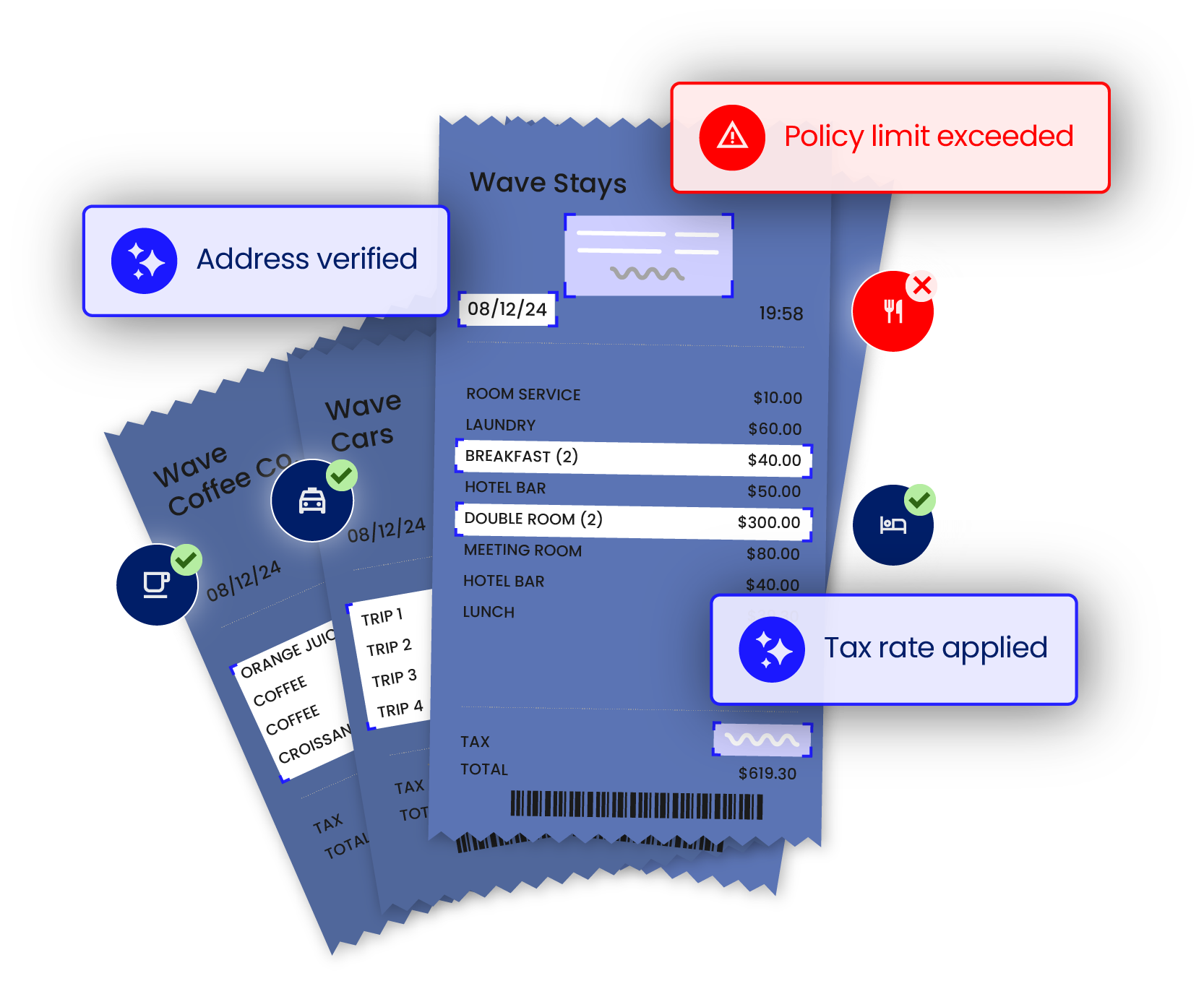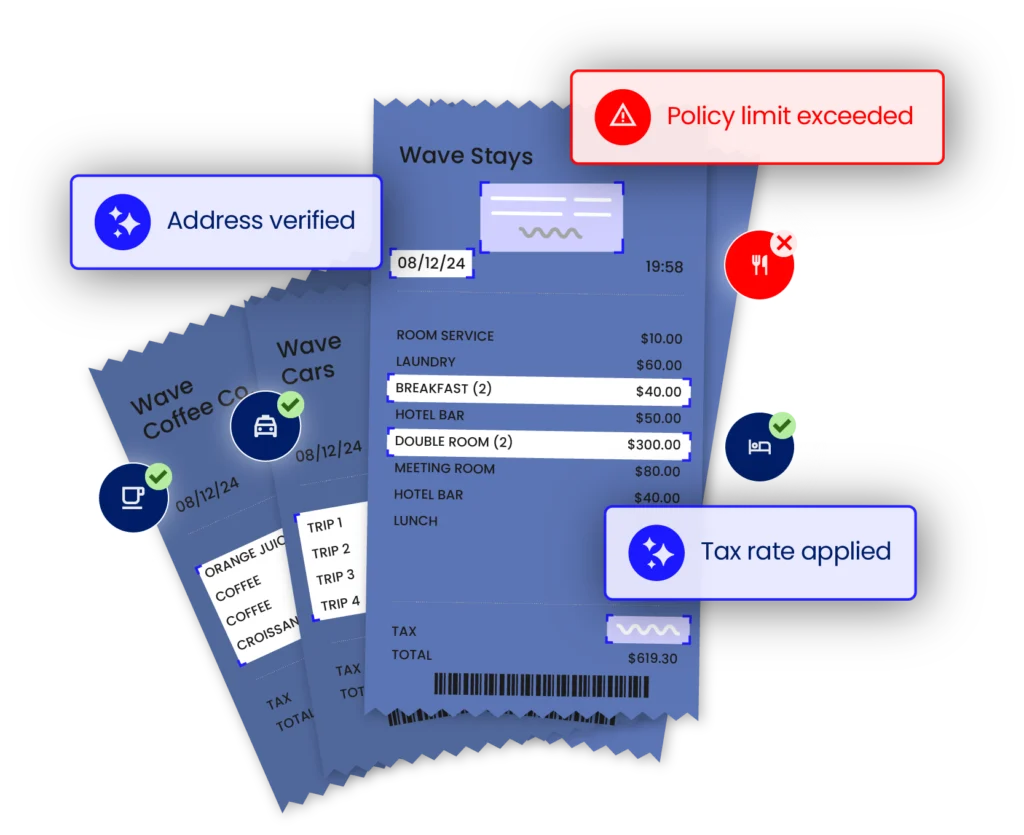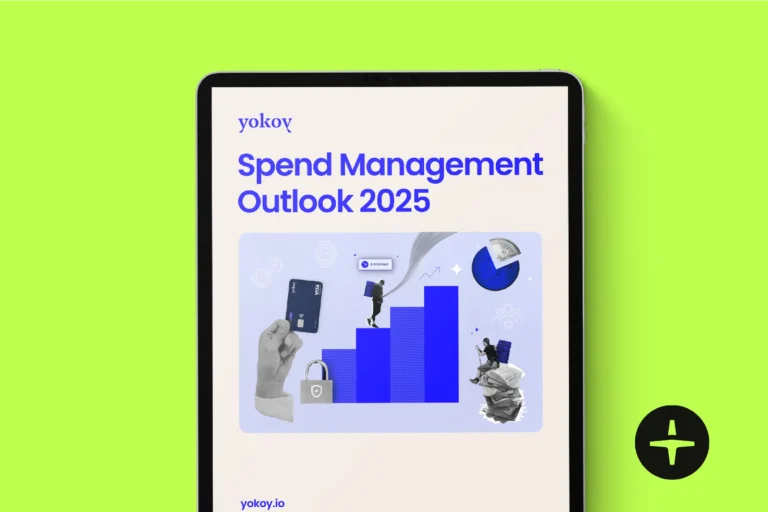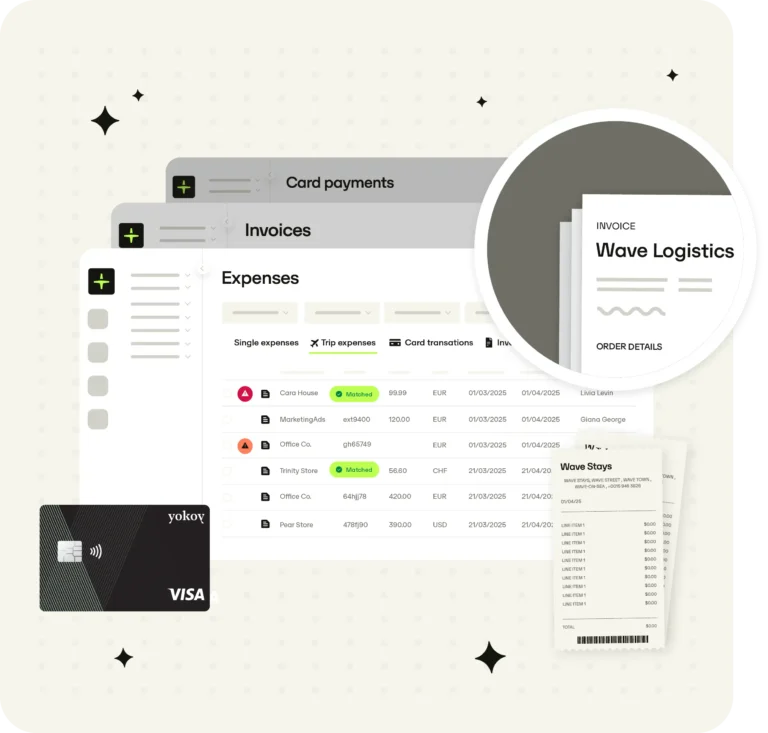How AI is helping companies tackle non-compliance in invoices and expenses
- Last updated:

In any organisation, Spend Management is a critical component of financial oversight. As well as tracking and analysing spend to ensure the efficient use of company resources, it also plays a key role in minimising fraud and ensuring both company policies and external regulations are adhered to.
In this article, we’ll explore how AI is proving finance leaders with a whole new toolkit to manage risk when it comes to processing invoices and expenses.
If you want to take a deeper dive into AI in Spend Management you can also download our whitepaper here.
The risks of expense and invoice processing
With any expenditure, whether it’s employee expenses incurred on a business trip or company spend on goods and services, every finance team will go through some sort of verification to ensure that:
- The spend is within company policy
- The transaction is genuine, and not an attempt to defraud the company
- Any external regulations are being adhered to
The cost of getting it wrong can be high.
For example, non-compliance with tax regulations regarding invoice content can result in substantial financial penalties.
Company policies meanwhile are put in place to ensure the finance team retains control over expenditure while giving employees enough freedom to be able to operate with the speed and autonomy they need. After all, if every penny had to go through the finance team, transactions would take a long time, and require a huge cost in finance personnel to manage.
But that’s not all, there are plenty of other risks including potential cashflow issues, inaccurate financial reporting, and in regulated industries such as finance or healthcare a company may even risk losing their operating licence or accreditation through compliance breaches.
Manual processing can lead to errors
In every company, human errors happen. In fact some of the most high profile cases on non-compliance are the result of human error.
That’s not to say there’s malicious activity, it’s a fact of life that there is always a degree of human error in any process, not least when teams are performing the same, repetitive tasks such as checking invoices hour after hour, day after day.
There’s also a cost element to consider. Manual processing can be a huge overhead for CFOs, needing to employ multiple people to efficiently go through invoices and expense reports to verify them and approve them for payment.
In fact, one Yokoy customer, Crisp – an app-only supermarket in the Netherlands – was employing an army of students to go through all the invoices that came in, verify them, code all the line items, and ensure they all had the correct details on them. You can check out Crisp’s story here.
They won’t be the only company doing that either!
Processing 50,000 invoices a year across multiple countries and entities at Crisp.
Welcome to intelligent spend management
For decades, spend management has been a largely manual – and somewhat error-prone – process.
The technology advances of the 1980s through to the 2010s introduced some digitisation as OCR enabled the efficient capture of financial documents and robotic process automation (RPA) unlocked basic automation of simple tasks like data exports.
But these early technologies still required a lot of manual input and were still prone to error.
Today, with advances in AI, finance leaders have a new technology that’s proving successful in helping them to efficiently and effectively police company spend policies, regulatory requirements and fraud.
AI in spend management refers to the use of machine learning algorithms, natural language processing (NLP), and data analytics to automate and enhance various processes related to tracking and managing company expenditures.
The primary applications of AI in spend management include
- Automated Data Capture
AI can automatically extract relevant data from invoices, receipts, and other documents, reducing manual data entry errors and saving time. - Expense Categorization
AI algorithms can categorize expenses accurately, ensuring that all expenditures are correctly allocated to the appropriate budget categories. - Anomaly Detection
AI can identify unusual spending patterns or anomalies that may indicate fraud or policy violations. - Compliance Monitoring
AI can continuously monitor transactions for compliance with internal policies and external regulations. - Predictive Analytics
AI can forecast future spending trends based on historical data, helping companies plan and budget more effectively.
AI-Powered Verification of Invoices and Expenses
AI-powered verification involves using AI algorithms to automatically review and validate invoices and expenses, ensuring their accuracy and compliance with company policies and regulations.
Here’s how it works:
1. Capture: Automated Data Extraction
AI systems build upon OCR (Optical Character Recognition) technology by enhancing the data capture from a document, whether it’s a receipt for an expense or an invoice from a vendor. Where OCR simply transfers what’s on the document into a digital format, AI actually understands the expected format and structure of the document and can then accurately structure the data as it’s extracted.
What’s more, if data is missing that the AI expects to be there — for example a vendor’s address is missing on an invoice or their IBAN is incorrect — it can automatically add that information as it’s learned on hundreds of thousands of invoices that it’s been trained on.
Having the data captured accurately and in a structured way is the foundation for accurate verification, as the AI then has a repeatable, structured dataset to compare against historical patterns, unlike legacy technologies which only structure data according to pre-built and hardcoded templates.
2. Verify: A forensic interrogation in an instant
With data structured in a standard format, AI is able to instantly analyse every data point on an invoice or receipt. The sheer processing power and speed of AI compared to human verification enables new technologies to verify the data against near infinite criteria in just a few seconds.
For example, it can compare against past invoices from the same supplier to ensure it’s genuine; it can check the invoice against a whole host of company policies from spend limits to vendor watchlists and everything in between; it can cross reference purchase orders and goods receipts in the system and instantly match them to the invoice… whatever checks and balances you need to put in place, AI can be trained to carry it out effectively and more efficiently than any human could.
By analysing spend patterns across a company, an AI specifically trained for spend management eliminates the need for manual data entry and is able to identify duplicates, policy breaches, and potential fraud and then instantly flag suspicious invoices or expenses to the right people.
3 Authorise: Ensuring the right workflow every time
The final step once an invoice has been verified is to authorise it for payment. Most companies will have multiple workflows here depending on the type of spend, and they’ll usually be specific to that company.
For example, you may decide that recurring payments like web domain hosting, subscriptions to trade bodies or utility bills are automatically sent for payment with no approval chain required — after all, it’s the same cost, at the same frequency every month, quarter, or year.
Others however, like employee expenses that fall within company spend policies, might require approval from a line manager before they’re authorised.
And then there’s the more complex cases — spend over a certain value, or with specific vendors, that might require two, three or even more eyes on it before it’s authorised for payment.
Doing this manually is complex. You need to know every rule and criteria, then make a judgement over each expense and invoice, and then route it through the right approvals.
Here’s where a particular type of AI — Prescriptive AI — can help.
Prescriptive AI is a type of AI that is able to recommend the next right action to take to achieve a particular outcome. It differs from predictive AI which makes predictions (eg predicting a transaction is fraudulent) by going the next step in taking the next action.
In intelligent spend management, predictive AI is able to route each expense and invoice through the right approval chain and workflow in order to be authorised. You simply tell the AI what your workflows are and it then adapts in real time to the output of the verification stage to route invoices and expenses through the right one.
This ensures that every spend within the company goes through the right workflow in order to be authorised and paid, helping to speed up processing and act as a second checkpoint against non-compliance or fraud as the right people are called in to check the right transactions.
Your ultimate guide to Artificial Intelligence in Spend Management
The impact of AI-powered spend management
Companies leveraging AI-powered spend management systems are already seeing significant benefits. For instance, a Deloitte study found that using AI for risk management can lead to a 43% reduction in false positives and a 37% increase in accuracy. This translates to substantial cost savings and improved operational efficiency.
At Yokoy, we work with finance teams around the world to help them enter the intelligence age by applying AI to their spend management program.
Like On Running for example, where 90% of employee expenses are now automatically processed, reducing the cost of processing by 79% in their first year with intelligent spend management.
At Swiss insurer GVB, the finance team saved some 300 hours a year by using AI to capture, verify, and authorise their invoices through Yokoy.
AI-powered spend management is bringing intelligence to finance teams around the world, unlocking new ways to manage compliance and mitigate fraud while also reducing their operating costs.
If you want to see it in action, book a demo today and see how you can start using AI-powered verification in your finance team.






















